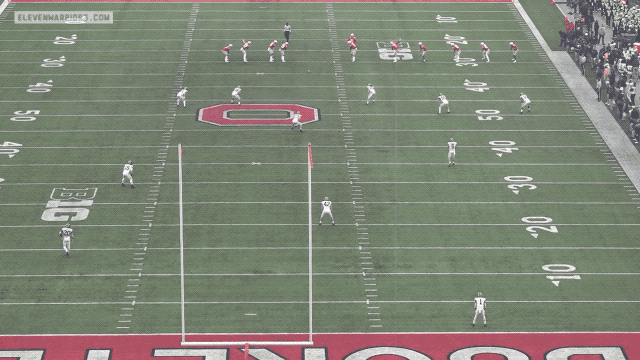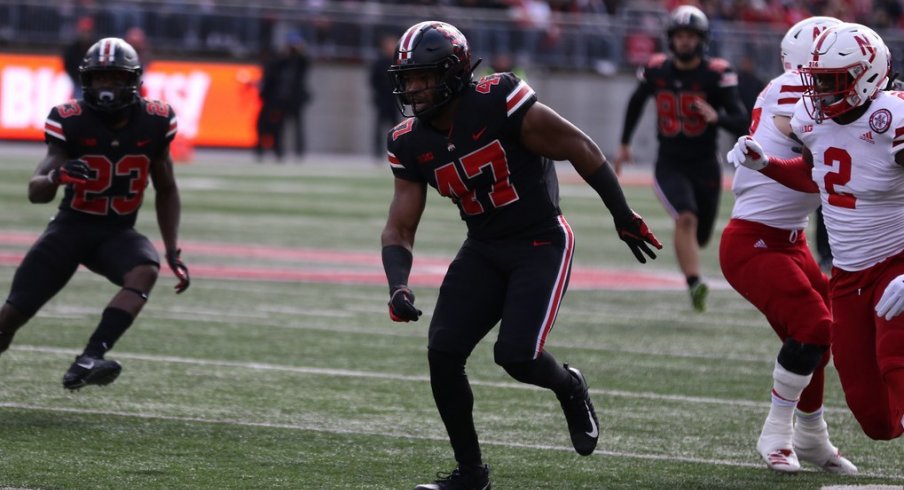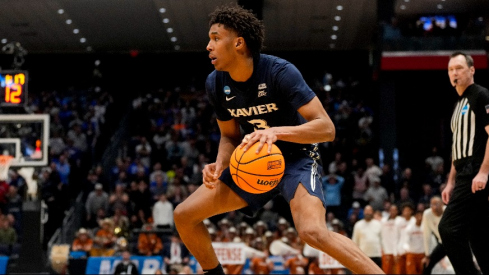In April 2018, the NCAA Playing Rules Oversight Panel approved an alteration to the game's kickoff procedure. For the first time, a kickoff would result in a touchback if a returner calls for and makes a fair catch inside the 25-yard line.
According to Big Ten Coordinator of Football Officials Bill Carollo, the reasoning behind the change was simple.
“Those pooch kicks that are in the side zones that we’re trying to eliminate in the game," Carollo said. "Because it has proven out to our testing and reviewing that some major injuries have happened on kickoffs.”
Initially, the change prompted many to wonder if and how the rule would affect the coffin-corner strategy of Ohio State's kickoff coverage team, which had experienced mixed results under Urban Meyer.
“We’ve probably had about a dozen conversations,” Meyer said at Big Ten media days last July. “Kickoff coverage, if we can find a way to have an advantage, then we’ll do it.”
He went on to add that he and assistant coach Greg Schiano had been trying to anticipate how opposing teams might respond.
“Do they just condense with us? Or do they keep spread out and see if it’s a kick that’s not on target, and return it? And if it’s on target then just fair catch it,” Meyer said.
In hindsight, the timing of the rule's passage couldn't have been any better.
Though the Buckeyes had been a top-10 unit the season prior in terms of average yards-allowed-per-return, there had been issues with the unit's execution. The team allowed a pair of touchdown returns and saw seven more kicks land out of bounds, while only 12 of 104 kickoffs resulted in touchbacks that fall.
“We’re the only school in America that can’t kick it out of the end zone, even with the wind at our back,” Meyer said after Saquon Barkley returned the opening kickoff for a touchdown to open that fall's epic contest against Penn State. “I’m not a kicking expert but kick the ball out of the end zone and we don’t do that. It’s not because of not telling them to kick the ball out of the end zone.”
To the naked eye, it appears that the Buckeyes' strategy didn't change with the advent of the new rule last season, however. They still crammed all 11 players on the coverage unit to one side of the field, aiming kicks between the left hash and the numbers.
Yet once the ball was kicked, individual coverage responsibilities were quite different, as there appeared to be three specific roles on the unit: Missiles, Free Hitters, and Contain.
As you might expect, the Missiles largely flew straight downfield, looking to make contact while staying in their lanes. Behind them, the Free Hitters would follow, using the Missiles to occupy blockers the same way an inside linebacker might tuck behind defensive linemen to stay free while reading a play.
Finally, there were a pair of Contain players who did just that, keeping returners from breaking outside. Instead of assigning this role to the last man on either end, however, the Contain players came directly from the interior, appearing to run straight downfield before peeling off outside once they'd crossed midfield.

The roles could and often did switch between different players throughout the unit, especially once opponents had seen the look multiple times. Thanks to the Buckeyes' prolific offense, this was often necessary, as the scarlet and gray kicked off 7.35 times-per-game on average in 2018.
| Year | Avg. Return Allowed | Nat. Rank | TDs Allowed |
|---|---|---|---|
| 2012 | 20.77 | 52nd | 1 |
| 2013 | 18.39 | 12th | 0 |
| 2014 | 17.24 | 8th | 0 |
| 2015 | 16.26 | 3rd | 0 |
| 2016 | 18.92 | 30th | 1 |
| 2017 | 17.41 | 10th | 2 |
| 2018 | 14.91 | 2nd | 0 |
Though kickoff specialist Blake Haubeil only booted the ball into the end zone quite a bit more than the year prior, registering 33 traditional touchbacks, he averaged only 60.5 yards-per-kick, meaning his aiming point was often the opposite 5-yard line.
While OSU's opponents regularly decided to simply take the guaranteed field position, recording 35 fair catches, they were goaded into attempting a return 33 times. Doing so, however, usually proved to be a mistake.
When opposing returners took their chances against the Ohio State kickoff team, they averaged a mere 14.91 yards-per-return. When added to an average catch point of the 5-yard-line means they often went down just shy of the 20, sacrificing the five yards they could have gained from simply calling for a fair catch.
“I’m not disagreeing with the rule. I think it’s very interesting,” Meyer said back in July. “I think this point next year we’ll have that conversation about how it went.”
It's safe to say now that it went pretty well, at least for Ohio State.



